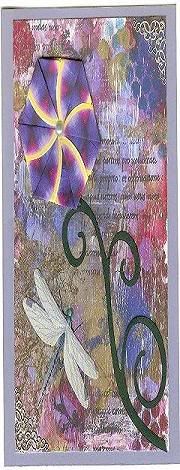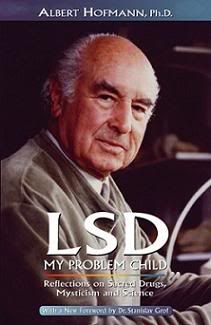Disclaimer and Safety Note
The information on this site is intended for research or entertainment purposes. Most commercially available Morning Glory/Hawaiian Baby Woodrose seeds contain toxic pesticides and preservatives, and eating them can cause illness. I do however, suggest buying the seeds and growing them for the beautiful, abundant flowers they produce.
History of Morning Glory
Morning Glory is a common flowering plant known to grow quickly in almost any climate; some people actually consider it a noxious weed due to it's uninhibited growth. The delicate flowers are a favorite among beginning gardeners and people looking for a simple and fast way to add to the landscape.
It comes as a surprise to many people to find that several common varieties of Morning Glory seeds contain levels of Lysergic Acid Amides (LSA), a natural analogue of LSD with psychoactive properties. Morning Glory has been used since ancient times in religious ceremonies.
The Aztecs, among other Central and South American Natives, have long used Morning Glory. The seeds were called "Tlitliltzen" and believed to contain helpful spirits that aided divination and helped treat the ill and injured. In some cultures, Morning Glory was more widely revered than Peyote or mushrooms.
Morning Glory is still used in South America among shamanic cultures, and is popular with psychonauts that don't feel comfortable using synthetic hallucinogens.
Strains that contain LSA are Heavenly Blues, Pearly Gates, and Flying Saucers.
It comes as a surprise to many people to find that several common varieties of Morning Glory seeds contain levels of Lysergic Acid Amides (LSA), a natural analogue of LSD with psychoactive properties. Morning Glory has been used since ancient times in religious ceremonies.
The Aztecs, among other Central and South American Natives, have long used Morning Glory. The seeds were called "Tlitliltzen" and believed to contain helpful spirits that aided divination and helped treat the ill and injured. In some cultures, Morning Glory was more widely revered than Peyote or mushrooms.
Morning Glory is still used in South America among shamanic cultures, and is popular with psychonauts that don't feel comfortable using synthetic hallucinogens.
Strains that contain LSA are Heavenly Blues, Pearly Gates, and Flying Saucers.
History of Hawaiian Baby Woodrose
Hawaiian Baby Woodrose (Argyreia nervosa) is a climbing vine in the same family as Morning Glory, known for it's slow growth. After a period of anywhere between 18 months to 5 years, the vine produces white trumpet-shaped flowers and seeds with LSA and other natural ergot-based alkaloids.
In comparison to Morning Glory seeds, HBWR seeds contain high levels of LSA and only 3-10 seeds are required to get the same effects from around 200-500 MG seeds. The seeds have a furry coating which should be removed beforehand.
There are different strains of HBWR and some contain no LSA content at all, but are often marketed by online headshops and Ebay vendors as the desirable kind. If a vendor labels the seeds as "Ghana," "Indian,"or "Ayurveda" strain, they have little to no LSA content. The "Hawaiian" strain, however, has around .12-.15% LSA per seed.
The other difference is the appearance. True Hawaiian seeds will be dark brown with a thick furry coating and sometimes peelable husks. The fake seeds often look like smooth popcorn kernels or have a light brown color.
You can check out a few pictures of authentic HBWR compared with "fake" seeds here:
http://www.erowid.org/plants/hbw/hbw_images.shtml
In comparison to Morning Glory seeds, HBWR seeds contain high levels of LSA and only 3-10 seeds are required to get the same effects from around 200-500 MG seeds. The seeds have a furry coating which should be removed beforehand.
There are different strains of HBWR and some contain no LSA content at all, but are often marketed by online headshops and Ebay vendors as the desirable kind. If a vendor labels the seeds as "Ghana," "Indian,"or "Ayurveda" strain, they have little to no LSA content. The "Hawaiian" strain, however, has around .12-.15% LSA per seed.
The other difference is the appearance. True Hawaiian seeds will be dark brown with a thick furry coating and sometimes peelable husks. The fake seeds often look like smooth popcorn kernels or have a light brown color.
You can check out a few pictures of authentic HBWR compared with "fake" seeds here:
http://www.erowid.org/plants/hbw/hbw_images.shtml
Ergot and The Eleusinian Mysteries
The citizens of ancient Greece used to take part in a yearly ceremony known as the Eleusinian Mysteries, which began around 1600 B.C. and continued until 396 A.D. when Christianity replaced the older religion. Not much is known about this cult as the practices within were a closely guarded secret, but we have some clues from scenes depicted in pottery and art.
Participants supposedly worshipped Demeter and learned about the mysteries of life and death through consuming a wine-like beverage known as Kykeon.
Modern scholars (including Albert Hofmann) hypothesize that Kykeon could have likely been wine made with ergot, a precursor to LSD. Ergot is an LSA-rich fungus that parasitizes certain grains known to have grown in the Mediterranean region
The combination of ergot and natural acetyldehyde in wine may have produced LSH, a chemical with around 75% the potency of LSD and psychoactive effects powerful enough to inspire a religious cult that lasted close to 2000 years.
Read "The Road To Eleusis" by R. Gordon Wasson, Albert Hofmann, and Carl Ruck:
http://www.maps.org/books/eleusis.pdf
Participants supposedly worshipped Demeter and learned about the mysteries of life and death through consuming a wine-like beverage known as Kykeon.
Modern scholars (including Albert Hofmann) hypothesize that Kykeon could have likely been wine made with ergot, a precursor to LSD. Ergot is an LSA-rich fungus that parasitizes certain grains known to have grown in the Mediterranean region
The combination of ergot and natural acetyldehyde in wine may have produced LSH, a chemical with around 75% the potency of LSD and psychoactive effects powerful enough to inspire a religious cult that lasted close to 2000 years.
Read "The Road To Eleusis" by R. Gordon Wasson, Albert Hofmann, and Carl Ruck:
http://www.maps.org/books/eleusis.pdf



